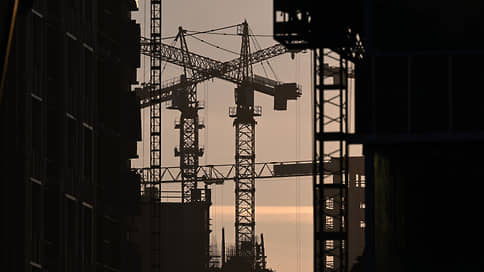It’s not as easy as it’s going down – Newspaper Kommersant No. 56 (7501) dated 04/01/2023
[ad_1]

The desire to increase the profitability of projects on expensive land is pushing developers to increase the height of houses under construction in Moscow. The share of objects from 30 floors and above in the structure of the exposition has doubled over five years, reaching almost 40%. Consultants expect further growth in the figure, although objects above 40 floors may already be too costly to build and maintain.
New buildings of 30 floors and above formed 39% (73 objects) of the total number of projects in the primary market of Moscow. Over the year, the share of such objects has grown by six percentage points (p.p.), since 2019 – by 19 p.p., calculated in Touch. Best-Novostroy notes that now 255 buildings above 30 floors are being built in Moscow. This is 24.3% of the total number of houses under construction, and in five years the share has more than doubled. The share of projects on floors 6–13 has decreased from 20% to 12% since 2019, and those on floors 14–29 have decreased from 55% to 45%.
NDV Real Estate Supermarket says that now there are 76 residential projects on the Moscow market above 30 floors, where 16.2 thousand lots with an area of 869 thousand square meters are exhibited. m. “Recently, the number of skyscrapers has increased by 2.5 times. If three or four years ago the trend was noticeable only in the business class, today many skyscrapers appear in comfort class projects,” says Natalia Kuznetsova, CEO of the company. According to Metrium, high-rise new buildings form 31% of the supply in the mass segment and business class, and 9% in the high-budget segment.
Natalia Kuznetsova links the growth in the share of high-rise projects with the desire of developers to increase the amount of space sold. According to Ivan Tatarinov, Executive Director of Glincom, such projects have become especially relevant against the backdrop of a shortage of land for construction. Prime Life Development Managing Partner Denis Konovalenko talks about the high cost of plots, including due to the increase in the cost of changing the type of permitted use. In his opinion, the optimal height now is from 25 floors. “Where high-rise buildings are built, low-rise buildings, as a rule, will not have positive profitability, and where low-rise buildings are built, there are restrictions on the number of storeys,” says Vladislav Preobrazhensky, Executive Director of the Moscow Investors Club (which unites developers).
High-rise buildings make it possible to improve the economy despite the rise in the cost of work. Key Capital CEO Olga Guseva says that the cost of building a high-rise “box” is on average 23% higher than a low-rise one. And according to the Deputy General Director of the Mangazeya Group of Companies, Vadim Ivanov, the construction of a high-rise complex is about 30% more expensive than a mid-rise one. He considers the range from 60 m to 100 m to be the optimal height for projects of the middle price category. “Taller buildings are classified as unique structures: the standards here are much more complicated, and the cost is growing significantly,” he argues. In houses above 100 m, the cost of engineering water supply and ventilation systems increases markedly, confirms Pavel Bryzgalov, head of product development at A101 Group of Companies. The appearance of mass housing above 40 floors is not worth waiting for, Mr. Tatarinov believes.
In general, the managing partner of Metrium, Nadezhda Korkka, notes that Moscow is “growing up” and the trend will only intensify. She admits that by 2050 the number of houses above 30 floors will increase tenfold. Buyers are not confused by this trend yet. According to Ms. Korkka, the number of storeys of buildings is usually not the main selection criterion. “There are always clients who choose ranges of floors: someone is looking only for the upper floors, but many choose apartments on the middle floors, regardless of the number of floors,” says Dombook managing partner Irina Dobrokhotova.
Although Touch’s managing partner, Sergei Shiferson, is convinced that in the business class segment, potential demand is still concentrated in the segment up to 13 floors. “Buyers are attracted by the lower building density, a small number of neighbors, a separate territory,” he explains. Pavel Bryzgalov considers the most advantageous strategy for the implementation of complex projects with multi-storey buildings. “Visual diversity affects the perception of the area, the quality of the urban environment, and indirectly, the average cost per square meter,” he says.
[ad_2]
Source link





